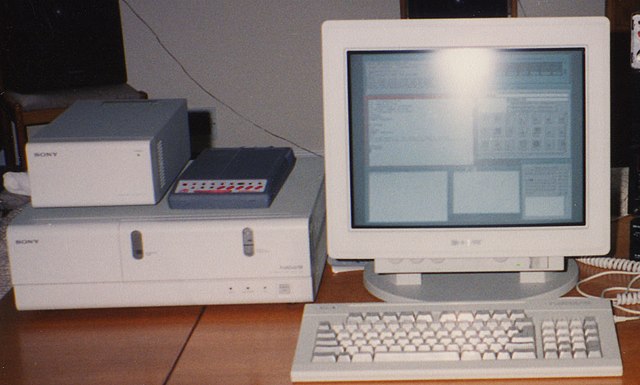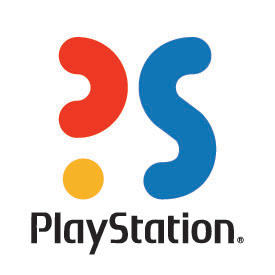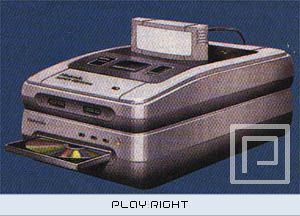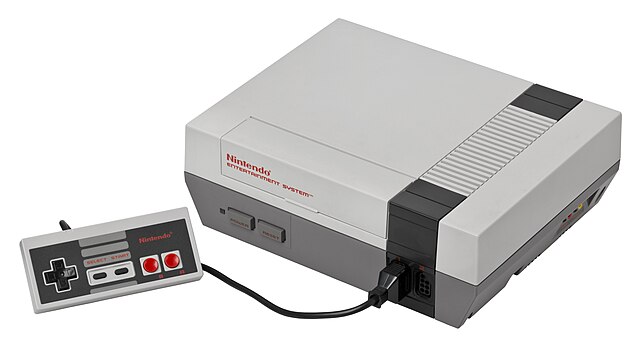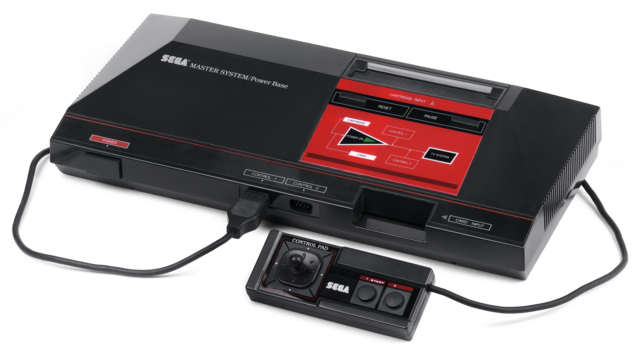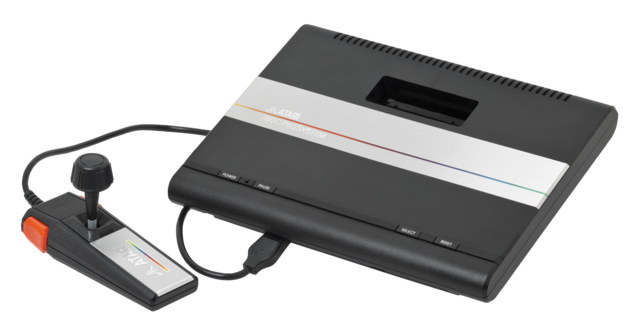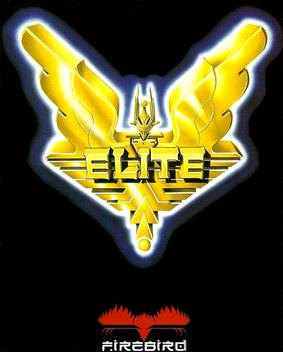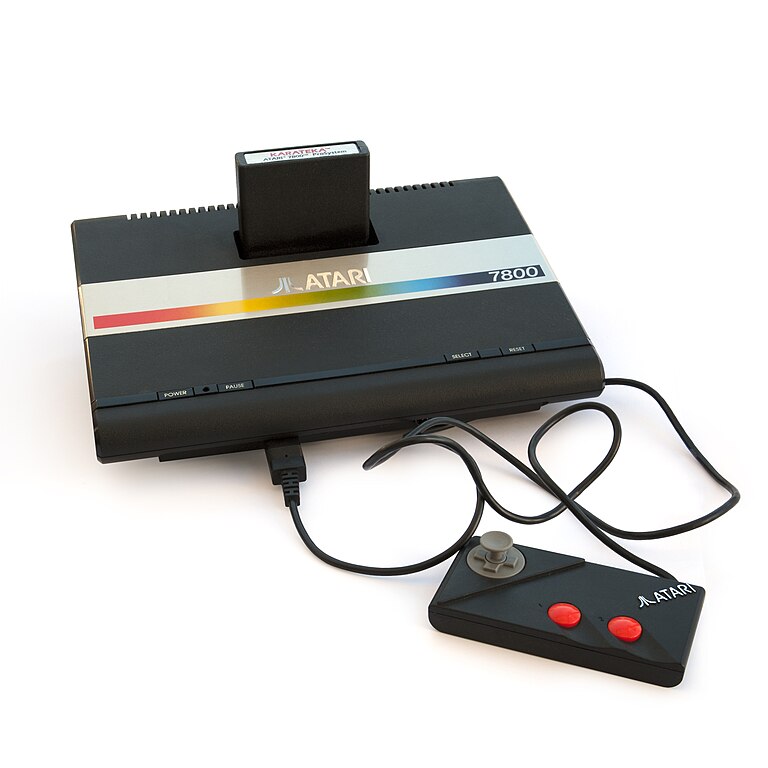A Node Magazine Special Report
Earthquake Weather
[ May / 1986 ]
[ A Node Magazine Special Report ]
[ Written by Martin Campbell ]

Shinjuku Streets, Tokyo 1985 by CanadaGood, on Flickr
THE HALLUCINOGENIC NEON LIGHTS of the future were obscured by dust and dirt and death.
Nobody said anything, those few originally wandering the sidewalk and people like me coming out of their late night bars or love hotels or clubs—all the joys of early morning Tokyo. Even the hyper-efficient street repair crew a block south were idle, their water-cooled saws slowing down to zero revolutions, I could feel them through my feet between the shocks.
The Big One went off at 2:18 am, 10 April, 1986 with the epicentre just three miles north of downtown Tokyo. Godzilla. The first rumbles were picked up at the University of Tokyo, a pair of students conducting a monitoring test as part of their final project. It measured 1.1 on the Richter scale, nothing to worry about. Normal, even. It escalated rapidly ever after that.
I was in a bar, a few miles away, paying for obscenely overpriced single malt scotch for the salaryman I was using as a source and listening to a particularly excellent jazz band while I was working on an article about a certain Japanese bank that has clearly moved down the list of importance. As we stumbled out I don't think we could have done anything if we had been able to do so, and we were not. We all just watched as Tokyo fell apart.
Tokyo is one of the world's better proofed cities for earthquakes. The city leads the way on, for instance active seismic vibration control using mass dampers a technology which has to started to proliferate throughout modern high-rise buildings. With a long history of devastating quakes the Japanese have placed a premium on modern technology to counter potential outcomes. What Godzilla revealed was the underlying problems of the political system.
I've been living in Japan for six years now and as regular readers of the magazine know I cover pretty much the whole East Asian desk for Node Magazine. As a technology magazine first, and a socio-political magazine second we at Node get much wider latitude than American and European newspaper or television reporters because technology advertising pays the bills for our privately owned company and our non-technological features are there to broaden our demographics. Node has always been entirely upfront about wanting to be the Rolling Stone of technology. So when I get thrown out of a Minister's office for asking perhaps the first real question he's ever heard from a news company I don't have problems with my bosses.
The first skyscraper toppled thirty-eight seconds into the East Asian Big One. Seventeen stories, built by a construction company that happily paid its dues to the local yakuza and its bribes to the local construction officials. Almost no one saw it, streets empty of all but that cleaning crew I was watching within a few minutes, and the drunken salarymen that marked Tokyo so neatly between image and reality. The second skyscraper fell, as best as anyone could tell, less than a minute later. I, and thousands of others, watched that one tumble and skitter, and then vanish: leaving a sudden missing gap in the city that was quite literally impossible to understand at the moment.
I'd like to cover two things in this. Why Japan, as you've heard from more frequently published sources than a monthly magazine like Node, is in political chaos and the technology that led up to certain underreported events that were wrongly sensationalized. The Western press is incredibly bad at covering Japan for all kinds of reasons and for different reasons many of them don't grasp technology either.
A French surveillance satellite, leasing two minutes of commercial time to a Tokyo urban planing firm, was the first to get photos. An office tower, twisted, the moment before it collapses; a visible ripple in hardened concrete arcing towards a cluster of low rise apartment buildings; a helicopter caught lifting off skittering sideways towards the edge of the roof. They are instantly iconic, emblematic of the ravening destruction that no one can imagine a modern city facing.
It was 2:22 in the morning according to my painstakingly obtained watch (see "The Underground World of Watch Collectors", October/84) when the building three blocks away followed suit with the distant skyscrapers and toppled across a pair more that were, thankfully, under construction and thus not inhabited. This was something impossible to reconcile, a presented reality that argued with every memory and bit of knowledge we thought we knew. Something that no one had seen in over three decades, a modern functioning city torn apart by forces outside its control. Something, for those of us that were there, that was a fundamental turning point in history.
The first official response comes from some poor bureaucrat, whoever happened to have the most seniority near a working phone in the middle of the night: "The Japanese Government is working hard to deal with the crisis". In terms of government-speak it is, as befits the Japanese, the most bland statement imaginable. It was also false, as Tokyo emergency crews worked with each other via radio independently of higher authority throughout the night—not a single phone line into or out of Tokyo was operational. The lines of official communication rested in the ships dotting the harbour, their powerful shortwaves and finicky satellite uplinks telling the world in snatches of disaster what happened.
The opening lines of this story are jotted in my notebook in shorthand, done blind, while I stare frantically at what's happening. "2:22, street crew is helping evacuation. 2:23, street crew has mounted their saws on a truck, moving towards apartment building to slice it open. 2:26, sirens, somewhere. 2:27, payphone is dead."
The standard fall-back system for telecommunications is that of the satellite, the signal bouncing towards the heavens as undersea cable systems, microwave transmitters, and copper phone lines collapse. Satellites are slow, much slower than a phone line and slower still than a cable running thousands of miles across the Pacific Ocean to the United States. Furthermore, satellites are used to replace those undersea cables when something goes wrong—they are not meant for the BBS population to hijack into. Hijacking, hacking, commandeering: this is what happened that night.
I find a young Japanese man holding a bulky radio, clearly not something standard issue for even those that love the consumer electronics of this country. It is too ugly. He is sitting on the sidewalk, not dressed properly (and this is astounding, for this city) and words whisper out into the air. I sit next to him and together we listen to a picture of disaster.
It started with an underground New York BBS and hacking group, the Incomparables, who seized an AT&T-leased satellite over the Pacific sometime between 3 and 4 am Tokyo time (or 1 pm to 2 pm New York time, 9 April). At this point much of the Western world is still in shock and there are no reliable reports out of the city. The compliant Japanese media has been muffled by the government and Western organizations—if they are reporting—are covering useless things.
The shortwave radio my Japanese acquittance has gradually paints the scene of chaos and police and fire and emergency response that has conflicting and contradictory and infrequent commands from higher up. Centralization and hierarchy do not work well upon a massive blow.
Once Incomparables had control of the satellite they locked it to a Tokyo-based satellite dish that was owned (in a non-legal sense) by one of the few prominent Japanese hackers. This gave the Incomparables a first look at the chaos inside the city, as well as bringing more useful reports of people watching what happened to wider attention. The Incomparables BBS crashed just after 6am, Tokyo time, as they reached both bandwidth and connection limits.
The Japanese people have made an implicit agreement with their government and corporations. Economic prosperity in exchange for not noticing corruption, collusion, and the facade of democracy. At some point of course this must break down, but we can certainly say that Godzilla moved this event rather forward. It's dawn, and I already feel the inchoate rage that will soon be harnessed.
The Incomparables go wide with (very slowly) transmitted fax documents from a Japanese source about the shoddy construction of one of the buildings that vanished. It reveals the skimming by the Yakuza, the convoluted bank loans that cost twice what they should, and the government bureaucrats that signed off on everything in what is obviously a bid for employment at the bank and the usefulness of employing extra people to make themselves look good to their bosses. This is not shocking for us on the ground who make it our beat, but the baldness of it is something new to the Japanese people.
It's noon and the earthquake is over and we are all in a daze. So many buildings are gone the skyline looks radically different. Partial restoration of phones has meant information is flooding in and out of the city now, but in whispered rumours throughout the day it seems clear that the denizens of Tokyo are beginning to hear about the how and why this supposedly earthquake proofed city fell apart.
The local AT&T New York City switching subsystem was hacked at 7:27 am (Tokyo time), presumably by the Incomparables, and their BBS went back up—backed by the full resources of AT&T who, at this point in the narrative, have failed to respond to the loss of their satellite which disrupts Japan-America phone calls and takes out roughly forty per cent of the entire Greater New York's region international phone capability.
The aftershocks are surprisingly low and so after a night's sleep in the emergency shelter just in case, it is without a flicker of surprise that shops are open the next day, I grab coffee and chat to customers. The narrative has begun to form already, relatives in undamaged cities talking about secondhand knowledge of the information the Incomparables are leaking. The leaks are spreading out to other Western media (CNN is, of course, the first) and the shameful glee of Super Japan cut through by metaphorical fault lines that the real fault lines have exposed is terribly hard to watch when I review the footage later. On the surface they are entirely in the right, but for a country that has been hyped as the "Next Big Thing" for half a decade you can see the sober talking heads picking at it.
By 8:30 am (Tokyo) the Incomparables had lost control of the satellite, the switching station, and one arrest had been made. It seemed that the brief flower of of citizen reporting was over. At least some information has escaped into the wider world from the black hole of the Japanese government-corporate access. However the attack on the Incomparables would lead to something more.
I wonder if the gold flecked coffee glinting in the back of my head is now done with, because how could anyone ever serve that again? It was a meeting with a banker a few months ago as I worked on that story I mentioned before, about non-preforming loans and their effect on the Japanese technology sector. That story is still coming, and it's a lot bigger now.
In the aftermath of the AT&T crash it became clear that the best hackers and the various BBS they inhabited had often collected information for information's sake, tucking it away as a quiet proof of how good they were. This became abundantly clear from 8 am to 10 am Tokyo time as a collection of hackers took it upon themselves to support the Incomparables.
Although AT&T has publicly refused to comment on the issue, a series of interviews with, yes, those ubitiquous "unnamed sources" reveal that AT&T cut all of NYC out of the American phone grid at, approximately, 9 am Tokyo time under orders from the US government. It turns out that this did not go as planned. By that time the Incomparables, in affiliation with what participants in the event call "every fucking hacker and wannabe in the metro area", had gained access to both the US-UK undersea cable and the New Jersey switching subsystem through social engineering and by physical possession of the NYC station for seventeen minutes before cops arrived and arrested three people.
The Incomparables release a short statement to the local New York media at precisely 10:10:10 am (Tokyo time), reading as follows: "The Incomparable possess the only non-government look into what is happening at Tokyo. We are also the only ones providing the truth. However we figure we're just about done here, so have a nice day."
Despite official responses it was soon clear that the frenzied hacking earlier that day had presented a clear and coherent on the ground picture of what was happening inside Tokyo where news organizations had generally failed and that their leak of internal Japanese documents had radically changed the narrative.
We should return to the beginning.
The first skyscraper toppled thirty-eight seconds into the East Asian Big One. Seventeen stories, built by a construction company that happily paid its dues to the local yakuza and its bribes to the local construction officials. The second skyscraper went down just past a minute into Godzilla and I, along with thousands of others, watched it fall and put an end to the Japan we knew.
That building brought down a government and although we are early the barbarians are at the gates and I can feel building the Japanese equivalent to the French Revolution. Nobody knows what shape this new thing will take, but I do know that the blinders of the citizens have been pried open in the most forceful way possible way. The proposed reforms by the new coalition government are sweeping in scope and perhaps even in effectiveness.
For now all that I can conclude is that the hallucinogenic neon lights of this city that has prided itself as being fifteen minutes in the future are dimmed, but I think we've made another leap down the timeline just as Commodore Perry and the imperial/industrial revolution and the nuclear weapons and the American occupation did to this country.
One more step into the future.
—Martin Campbell is the Japanese and East Asian correspondent for Node Magazine. It is a point of pride for him that he has been thrown out of four Japanese Ministries and that seventeen major Japanese companies have standing orders for their employees to not talk to him. He is also no longer welcome in South Korea. His last piece appeared in Node Magazine February/86 about the yakuza and their associations with the government. He is a contributing editor for The Economist and occasionally files articles for the BBC.

More Shinjuku Streets at Night, Tokyo 1985 by CanadaGood, on Flickr
[ May / 1986 ]
[ A Node Magazine Special Report ]
[ Written by Martin Campbell ]

Shinjuku Streets, Tokyo 1985 by CanadaGood, on Flickr
THE HALLUCINOGENIC NEON LIGHTS of the future were obscured by dust and dirt and death.
Nobody said anything, those few originally wandering the sidewalk and people like me coming out of their late night bars or love hotels or clubs—all the joys of early morning Tokyo. Even the hyper-efficient street repair crew a block south were idle, their water-cooled saws slowing down to zero revolutions, I could feel them through my feet between the shocks.
The Big One went off at 2:18 am, 10 April, 1986 with the epicentre just three miles north of downtown Tokyo. Godzilla. The first rumbles were picked up at the University of Tokyo, a pair of students conducting a monitoring test as part of their final project. It measured 1.1 on the Richter scale, nothing to worry about. Normal, even. It escalated rapidly ever after that.
I was in a bar, a few miles away, paying for obscenely overpriced single malt scotch for the salaryman I was using as a source and listening to a particularly excellent jazz band while I was working on an article about a certain Japanese bank that has clearly moved down the list of importance. As we stumbled out I don't think we could have done anything if we had been able to do so, and we were not. We all just watched as Tokyo fell apart.
Tokyo is one of the world's better proofed cities for earthquakes. The city leads the way on, for instance active seismic vibration control using mass dampers a technology which has to started to proliferate throughout modern high-rise buildings. With a long history of devastating quakes the Japanese have placed a premium on modern technology to counter potential outcomes. What Godzilla revealed was the underlying problems of the political system.
I've been living in Japan for six years now and as regular readers of the magazine know I cover pretty much the whole East Asian desk for Node Magazine. As a technology magazine first, and a socio-political magazine second we at Node get much wider latitude than American and European newspaper or television reporters because technology advertising pays the bills for our privately owned company and our non-technological features are there to broaden our demographics. Node has always been entirely upfront about wanting to be the Rolling Stone of technology. So when I get thrown out of a Minister's office for asking perhaps the first real question he's ever heard from a news company I don't have problems with my bosses.
The first skyscraper toppled thirty-eight seconds into the East Asian Big One. Seventeen stories, built by a construction company that happily paid its dues to the local yakuza and its bribes to the local construction officials. Almost no one saw it, streets empty of all but that cleaning crew I was watching within a few minutes, and the drunken salarymen that marked Tokyo so neatly between image and reality. The second skyscraper fell, as best as anyone could tell, less than a minute later. I, and thousands of others, watched that one tumble and skitter, and then vanish: leaving a sudden missing gap in the city that was quite literally impossible to understand at the moment.
I'd like to cover two things in this. Why Japan, as you've heard from more frequently published sources than a monthly magazine like Node, is in political chaos and the technology that led up to certain underreported events that were wrongly sensationalized. The Western press is incredibly bad at covering Japan for all kinds of reasons and for different reasons many of them don't grasp technology either.
A French surveillance satellite, leasing two minutes of commercial time to a Tokyo urban planing firm, was the first to get photos. An office tower, twisted, the moment before it collapses; a visible ripple in hardened concrete arcing towards a cluster of low rise apartment buildings; a helicopter caught lifting off skittering sideways towards the edge of the roof. They are instantly iconic, emblematic of the ravening destruction that no one can imagine a modern city facing.
It was 2:22 in the morning according to my painstakingly obtained watch (see "The Underground World of Watch Collectors", October/84) when the building three blocks away followed suit with the distant skyscrapers and toppled across a pair more that were, thankfully, under construction and thus not inhabited. This was something impossible to reconcile, a presented reality that argued with every memory and bit of knowledge we thought we knew. Something that no one had seen in over three decades, a modern functioning city torn apart by forces outside its control. Something, for those of us that were there, that was a fundamental turning point in history.
The first official response comes from some poor bureaucrat, whoever happened to have the most seniority near a working phone in the middle of the night: "The Japanese Government is working hard to deal with the crisis". In terms of government-speak it is, as befits the Japanese, the most bland statement imaginable. It was also false, as Tokyo emergency crews worked with each other via radio independently of higher authority throughout the night—not a single phone line into or out of Tokyo was operational. The lines of official communication rested in the ships dotting the harbour, their powerful shortwaves and finicky satellite uplinks telling the world in snatches of disaster what happened.
The opening lines of this story are jotted in my notebook in shorthand, done blind, while I stare frantically at what's happening. "2:22, street crew is helping evacuation. 2:23, street crew has mounted their saws on a truck, moving towards apartment building to slice it open. 2:26, sirens, somewhere. 2:27, payphone is dead."
The standard fall-back system for telecommunications is that of the satellite, the signal bouncing towards the heavens as undersea cable systems, microwave transmitters, and copper phone lines collapse. Satellites are slow, much slower than a phone line and slower still than a cable running thousands of miles across the Pacific Ocean to the United States. Furthermore, satellites are used to replace those undersea cables when something goes wrong—they are not meant for the BBS population to hijack into. Hijacking, hacking, commandeering: this is what happened that night.
I find a young Japanese man holding a bulky radio, clearly not something standard issue for even those that love the consumer electronics of this country. It is too ugly. He is sitting on the sidewalk, not dressed properly (and this is astounding, for this city) and words whisper out into the air. I sit next to him and together we listen to a picture of disaster.
It started with an underground New York BBS and hacking group, the Incomparables, who seized an AT&T-leased satellite over the Pacific sometime between 3 and 4 am Tokyo time (or 1 pm to 2 pm New York time, 9 April). At this point much of the Western world is still in shock and there are no reliable reports out of the city. The compliant Japanese media has been muffled by the government and Western organizations—if they are reporting—are covering useless things.
The shortwave radio my Japanese acquittance has gradually paints the scene of chaos and police and fire and emergency response that has conflicting and contradictory and infrequent commands from higher up. Centralization and hierarchy do not work well upon a massive blow.
Once Incomparables had control of the satellite they locked it to a Tokyo-based satellite dish that was owned (in a non-legal sense) by one of the few prominent Japanese hackers. This gave the Incomparables a first look at the chaos inside the city, as well as bringing more useful reports of people watching what happened to wider attention. The Incomparables BBS crashed just after 6am, Tokyo time, as they reached both bandwidth and connection limits.
The Japanese people have made an implicit agreement with their government and corporations. Economic prosperity in exchange for not noticing corruption, collusion, and the facade of democracy. At some point of course this must break down, but we can certainly say that Godzilla moved this event rather forward. It's dawn, and I already feel the inchoate rage that will soon be harnessed.
The Incomparables go wide with (very slowly) transmitted fax documents from a Japanese source about the shoddy construction of one of the buildings that vanished. It reveals the skimming by the Yakuza, the convoluted bank loans that cost twice what they should, and the government bureaucrats that signed off on everything in what is obviously a bid for employment at the bank and the usefulness of employing extra people to make themselves look good to their bosses. This is not shocking for us on the ground who make it our beat, but the baldness of it is something new to the Japanese people.
It's noon and the earthquake is over and we are all in a daze. So many buildings are gone the skyline looks radically different. Partial restoration of phones has meant information is flooding in and out of the city now, but in whispered rumours throughout the day it seems clear that the denizens of Tokyo are beginning to hear about the how and why this supposedly earthquake proofed city fell apart.
The local AT&T New York City switching subsystem was hacked at 7:27 am (Tokyo time), presumably by the Incomparables, and their BBS went back up—backed by the full resources of AT&T who, at this point in the narrative, have failed to respond to the loss of their satellite which disrupts Japan-America phone calls and takes out roughly forty per cent of the entire Greater New York's region international phone capability.
The aftershocks are surprisingly low and so after a night's sleep in the emergency shelter just in case, it is without a flicker of surprise that shops are open the next day, I grab coffee and chat to customers. The narrative has begun to form already, relatives in undamaged cities talking about secondhand knowledge of the information the Incomparables are leaking. The leaks are spreading out to other Western media (CNN is, of course, the first) and the shameful glee of Super Japan cut through by metaphorical fault lines that the real fault lines have exposed is terribly hard to watch when I review the footage later. On the surface they are entirely in the right, but for a country that has been hyped as the "Next Big Thing" for half a decade you can see the sober talking heads picking at it.
By 8:30 am (Tokyo) the Incomparables had lost control of the satellite, the switching station, and one arrest had been made. It seemed that the brief flower of of citizen reporting was over. At least some information has escaped into the wider world from the black hole of the Japanese government-corporate access. However the attack on the Incomparables would lead to something more.
I wonder if the gold flecked coffee glinting in the back of my head is now done with, because how could anyone ever serve that again? It was a meeting with a banker a few months ago as I worked on that story I mentioned before, about non-preforming loans and their effect on the Japanese technology sector. That story is still coming, and it's a lot bigger now.
In the aftermath of the AT&T crash it became clear that the best hackers and the various BBS they inhabited had often collected information for information's sake, tucking it away as a quiet proof of how good they were. This became abundantly clear from 8 am to 10 am Tokyo time as a collection of hackers took it upon themselves to support the Incomparables.
Although AT&T has publicly refused to comment on the issue, a series of interviews with, yes, those ubitiquous "unnamed sources" reveal that AT&T cut all of NYC out of the American phone grid at, approximately, 9 am Tokyo time under orders from the US government. It turns out that this did not go as planned. By that time the Incomparables, in affiliation with what participants in the event call "every fucking hacker and wannabe in the metro area", had gained access to both the US-UK undersea cable and the New Jersey switching subsystem through social engineering and by physical possession of the NYC station for seventeen minutes before cops arrived and arrested three people.
The Incomparables release a short statement to the local New York media at precisely 10:10:10 am (Tokyo time), reading as follows: "The Incomparable possess the only non-government look into what is happening at Tokyo. We are also the only ones providing the truth. However we figure we're just about done here, so have a nice day."
Despite official responses it was soon clear that the frenzied hacking earlier that day had presented a clear and coherent on the ground picture of what was happening inside Tokyo where news organizations had generally failed and that their leak of internal Japanese documents had radically changed the narrative.
We should return to the beginning.
The first skyscraper toppled thirty-eight seconds into the East Asian Big One. Seventeen stories, built by a construction company that happily paid its dues to the local yakuza and its bribes to the local construction officials. The second skyscraper went down just past a minute into Godzilla and I, along with thousands of others, watched it fall and put an end to the Japan we knew.
That building brought down a government and although we are early the barbarians are at the gates and I can feel building the Japanese equivalent to the French Revolution. Nobody knows what shape this new thing will take, but I do know that the blinders of the citizens have been pried open in the most forceful way possible way. The proposed reforms by the new coalition government are sweeping in scope and perhaps even in effectiveness.
For now all that I can conclude is that the hallucinogenic neon lights of this city that has prided itself as being fifteen minutes in the future are dimmed, but I think we've made another leap down the timeline just as Commodore Perry and the imperial/industrial revolution and the nuclear weapons and the American occupation did to this country.
One more step into the future.
—Martin Campbell is the Japanese and East Asian correspondent for Node Magazine. It is a point of pride for him that he has been thrown out of four Japanese Ministries and that seventeen major Japanese companies have standing orders for their employees to not talk to him. He is also no longer welcome in South Korea. His last piece appeared in Node Magazine February/86 about the yakuza and their associations with the government. He is a contributing editor for The Economist and occasionally files articles for the BBC.

More Shinjuku Streets at Night, Tokyo 1985 by CanadaGood, on Flickr
Last edited:
